Do you have a question about the Philips 20MF605T/17 and is the answer not in the manual?
Instructions for handling the LCD module to prevent damage and ensure safety.
Description of the monitor, basic data, LCD panel details, and input signals.
Detailed technical data for different LCD panel types (LPL, AUO, CPT).
Information on PC/TV input signals, connector pin assignments, and TV mode adjustments.
Initial steps to ensure correct and safe installation of the TV.
Instructions for operating the TV and installing batteries in the remote.
Guides for connecting antenna and basic cable TV signals.
Steps for connecting the TV via a cable box.
Connecting external audio/video sources, S-Video, and cable box stereo audio.
Connecting PC monitors and component video sources for high-resolution playback.
On-screen display adjustments available in PC mode.
On-screen display adjustments available in TV/AV/S-VIDEO/HDTV modes.
Configuration options for audio, features, and installation via OSD.
Display when no video signal is detected and instructions to enter aging mode.
Warnings for factory adjustment, out-of-range PC input, and no video signal.
Step-by-step guide to enter the factory mode.
Overview of main controls and available factory adjustment parameters.
Troubleshooting guides for common operational problems.
Descriptions and visual examples of common LCD panel defects.
Step-by-step guide for disassembling the TV and removing internal components.
Guidelines for electrical tests, input signal parameters, and TV display adjustments.
Overview of factory adjustment menu and PC mode display settings.
Procedures for white balance and smart picture adjustments.
Configuration options for smart picture and sound modes.
Detailed timing parameters for the LCD monitor.
Steps to enter the factory mode for display adjustments.
Procedures for PC mode white-D and color adjustments.
Guide for setting up and using the color analyzer tool for calibration.
Setting smart picture modes and adjusting CIE chromaticity coordinates.
Details on EDID data, vendor identification, display parameters, and color characteristics.
General information on DDC data reprogramming and system requirements.
Pin configuration for the D-sub connector used in DDC instructions.
Steps for configuring, installing, and initializing software for DDC data.
Procedures for modifying EDID version, serial number, and display parameters.
Adjusting established timings, standard timing identification, and detailed descriptors.
Procedures for writing, saving DDC data, and exiting the application.
Steps for ISP configuration, equipment requirements, and firmware update process.
Procedures for exiting the ISP program and resolving common errors.
A diagram illustrating the interconnected functional blocks of the TV system.
Schematic diagrams for the TV's key board and IR receiver board.
An illustration showing the TV's components in an exploded format with part numbers.
List of spare parts for mechanical components, LCD panel, and accessories.
Guidelines for handling, removing, and attaching Surface Mounted Devices (SMDs).
Instructions for lead-free soldering and reworking Ball Grid Array ICs.
Flowchart for diagnosing power, raster, and D-Sub picture problems.
Flowchart for diagnosing audio, remote control, and keypad problems.
General description of the 20" LCD monitor's capabilities.
Index of specification sections and foreword.
Overview of the product and detailed LCD panel specifications.
Details on physical dimensions, weight, and environmental operating conditions.
Information on product reliability, quality checks, and serviceability.
Foreword, product profile, LCD panel details, and operational frequencies.
Supported functions, regulatory compliance, and signal cable specifications.
Description of the TV's keypad layout and key function mappings.
Instructions for accessing menus and using the remote control.
Specifications for PC interface, including scanning and input connectors.
List of available display timings and resolutions for different modes.
Horizontal and vertical front porch timing values for various modes.
Description of TV interface capabilities and system deviations across regions.
Detailed TV system information and electrical characteristics of I/O ports.
Specific requirements for the D-sub 15-pin connector in PC mode.
Details for various audio and video input types.
Information on the power adapter and cord.
Description of power saving modes and display identification via DDC2B.
General visual performance metrics and test conditions.
List of resolutions and brightness specifications.
Procedures for brightness uniformity and white color adjustments.
Method for centering the picture in TV mode.
Details on unit controls, physical dimensions, weight, and tilt base.
Information regarding shipping dimensions and weights.
Operating, storage, and transportation environmental conditions and tests.
Product reliability metrics and susceptibility to ESD.
Requirements for quality assurance, acceptance tests, and serviceability.
List of NAFTA TV channels with video and audio carrier frequencies.
Description of TV interface capabilities and system deviations across regions.
Continuation of the NAFTA TV channel frequency list.
Continuation of the NAFTA TV channel frequency list.
Overview of the LCD-TV's functionality and explanation of the system block diagram.
Explanation of video decoder, audio decoder, and panel interface functions.
Notes on chipset compatibility and panel interface types.
Details on tuner/sound decoder diversity and component function descriptions.
Instructions and requirements for Hi-Pot and ground continuity tests.
Recommended equipment, connection procedures, and recording guidelines for safety tests.
Instructions for handling the LCD module to prevent damage and ensure safety.
Description of the monitor, basic data, LCD panel details, and input signals.
Detailed technical data for different LCD panel types (LPL, AUO, CPT).
Information on PC/TV input signals, connector pin assignments, and TV mode adjustments.
Initial steps to ensure correct and safe installation of the TV.
Instructions for operating the TV and installing batteries in the remote.
Guides for connecting antenna and basic cable TV signals.
Steps for connecting the TV via a cable box.
Connecting external audio/video sources, S-Video, and cable box stereo audio.
Connecting PC monitors and component video sources for high-resolution playback.
On-screen display adjustments available in PC mode.
On-screen display adjustments available in TV/AV/S-VIDEO/HDTV modes.
Configuration options for audio, features, and installation via OSD.
Display when no video signal is detected and instructions to enter aging mode.
Warnings for factory adjustment, out-of-range PC input, and no video signal.
Step-by-step guide to enter the factory mode.
Overview of main controls and available factory adjustment parameters.
Troubleshooting guides for common operational problems.
Descriptions and visual examples of common LCD panel defects.
Step-by-step guide for disassembling the TV and removing internal components.
Guidelines for electrical tests, input signal parameters, and TV display adjustments.
Overview of factory adjustment menu and PC mode display settings.
Procedures for white balance and smart picture adjustments.
Configuration options for smart picture and sound modes.
Detailed timing parameters for the LCD monitor.
Steps to enter the factory mode for display adjustments.
Procedures for PC mode white-D and color adjustments.
Guide for setting up and using the color analyzer tool for calibration.
Setting smart picture modes and adjusting CIE chromaticity coordinates.
Details on EDID data, vendor identification, display parameters, and color characteristics.
General information on DDC data reprogramming and system requirements.
Pin configuration for the D-sub connector used in DDC instructions.
Steps for configuring, installing, and initializing software for DDC data.
Procedures for modifying EDID version, serial number, and display parameters.
Adjusting established timings, standard timing identification, and detailed descriptors.
Procedures for writing, saving DDC data, and exiting the application.
Steps for ISP configuration, equipment requirements, and firmware update process.
Procedures for exiting the ISP program and resolving common errors.
A diagram illustrating the interconnected functional blocks of the TV system.
Schematic diagrams for the TV's key board and IR receiver board.
An illustration showing the TV's components in an exploded format with part numbers.
List of spare parts for mechanical components, LCD panel, and accessories.
Guidelines for handling, removing, and attaching Surface Mounted Devices (SMDs).
Instructions for lead-free soldering and reworking Ball Grid Array ICs.
Flowchart for diagnosing power, raster, and D-Sub picture problems.
Flowchart for diagnosing audio, remote control, and keypad problems.
General description of the 20" LCD monitor's capabilities.
Index of specification sections and foreword.
Overview of the product and detailed LCD panel specifications.
Details on physical dimensions, weight, and environmental operating conditions.
Information on product reliability, quality checks, and serviceability.
Foreword, product profile, LCD panel details, and operational frequencies.
Supported functions, regulatory compliance, and signal cable specifications.
Description of the TV's keypad layout and key function mappings.
Instructions for accessing menus and using the remote control.
Specifications for PC interface, including scanning and input connectors.
List of available display timings and resolutions for different modes.
Horizontal and vertical front porch timing values for various modes.
Description of TV interface capabilities and system deviations across regions.
Detailed TV system information and electrical characteristics of I/O ports.
Specific requirements for the D-sub 15-pin connector in PC mode.
Details for various audio and video input types.
Information on the power adapter and cord.
Description of power saving modes and display identification via DDC2B.
General visual performance metrics and test conditions.
List of resolutions and brightness specifications.
Procedures for brightness uniformity and white color adjustments.
Method for centering the picture in TV mode.
Details on unit controls, physical dimensions, weight, and tilt base.
Information regarding shipping dimensions and weights.
Operating, storage, and transportation environmental conditions and tests.
Product reliability metrics and susceptibility to ESD.
Requirements for quality assurance, acceptance tests, and serviceability.
List of NAFTA TV channels with video and audio carrier frequencies.
Description of TV interface capabilities and system deviations across regions.
Continuation of the NAFTA TV channel frequency list.
Continuation of the NAFTA TV channel frequency list.
Overview of the LCD-TV's functionality and explanation of the system block diagram.
Explanation of video decoder, audio decoder, and panel interface functions.
Notes on chipset compatibility and panel interface types.
Details on tuner/sound decoder diversity and component function descriptions.
Instructions and requirements for Hi-Pot and ground continuity tests.
Recommended equipment, connection procedures, and recording guidelines for safety tests.

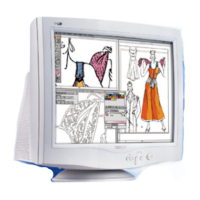
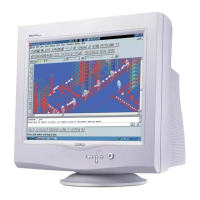



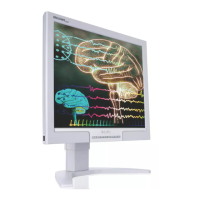

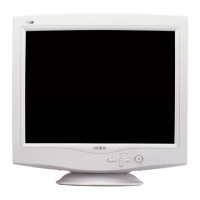
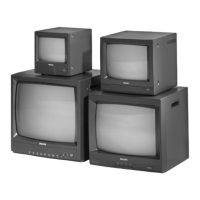
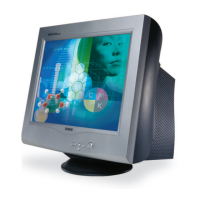

